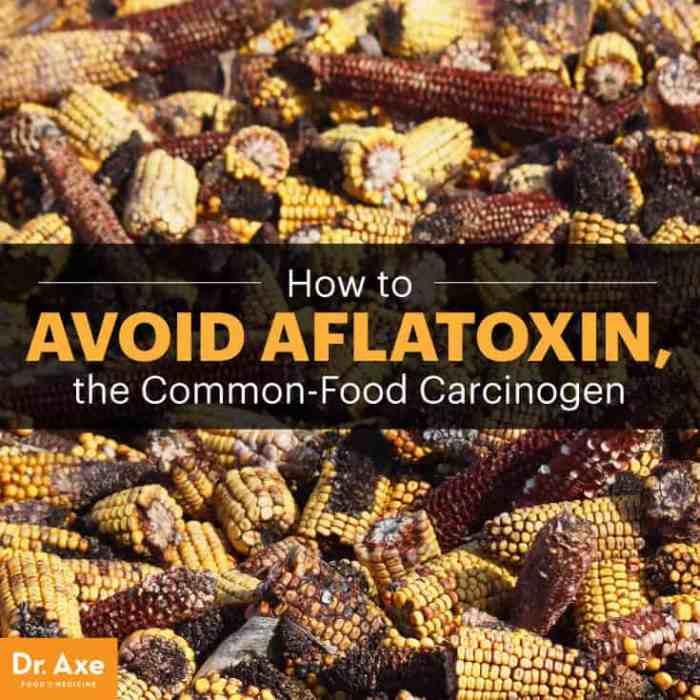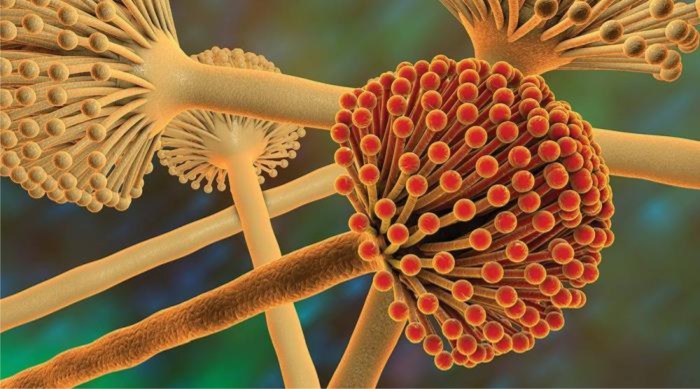Substance created by mold that destroys the liver, known as mycotoxins, poses a significant threat to human health, particularly affecting the liver. These toxic compounds, produced by various mold species, can contaminate food crops, leading to severe health consequences when consumed.
The impact of mycotoxins on liver health has been extensively studied, revealing their ability to cause liver damage, impair liver function, and even contribute to chronic liver diseases. Understanding the sources, mechanisms of action, and preventive measures associated with mycotoxins is crucial for safeguarding public health.
Substance Created by Mold that Destroys the Liver

Molds are ubiquitous fungi that can colonize various substrates, including food crops. Some molds produce toxic secondary metabolites called mycotoxins, which can pose significant health risks to humans and animals. Among these mycotoxins, aflatoxins, ochratoxin A, and citrinin are known to have detrimental effects on liver health.
Aflatoxins
Aflatoxins are a group of mycotoxins produced by Aspergillusspecies, commonly found on crops such as corn, peanuts, and cottonseed. Aflatoxin contamination occurs during pre-harvest, harvest, and storage of these crops under favorable conditions of temperature and humidity.
Aflatoxins are highly toxic and can cause a range of adverse health effects, including liver damage. Ingestion of aflatoxin-contaminated food can lead to acute aflatoxin poisoning, characterized by symptoms such as vomiting, abdominal pain, and jaundice. Chronic exposure to aflatoxins has been associated with an increased risk of liver cancer.
- Sources:Corn, peanuts, cottonseed, rice, wheat
- Chemical structure:Furanocoumarin derivatives
- Toxic effects:Acute liver damage, liver cancer
Ochratoxin A
Ochratoxin A is a mycotoxin produced by Aspergillusand Penicilliumspecies, commonly found on cereals, coffee beans, and grapes. It is a nephrotoxin that primarily affects the kidneys, but it can also cause liver damage.
Ochratoxin A inhibits protein synthesis and disrupts cellular metabolism in the liver. It can lead to liver inflammation, fibrosis, and, in severe cases, liver failure. Additionally, ochratoxin A has been implicated in the development of chronic kidney disease.
- Sources:Cereals, coffee beans, grapes, wine
- Chemical structure:Isochroman derivative
- Toxic effects:Liver damage, chronic kidney disease
Citrinin
Citrinin is a mycotoxin produced by Penicilliumand Aspergillusspecies, commonly found on moldy grains and cereals. It is a nephrotoxic and hepatotoxic mycotoxin that can cause damage to both the kidneys and the liver.
Citrinin inhibits mitochondrial function and induces oxidative stress in the liver. It can lead to liver cell death, inflammation, and fibrosis. Exposure to citrinin has been associated with an increased risk of liver cancer.
- Sources:Moldy grains, cereals
- Chemical structure:Mycotetramate derivative
- Toxic effects:Liver damage, liver cancer
Mycotoxins and Liver Health
The table below summarizes the key mycotoxins that can damage the liver, along with their sources, chemical structures, and toxic effects:
| Mycotoxin | Sources | Chemical Structure | Toxic Effects |
|---|---|---|---|
| Aflatoxins | Corn, peanuts, cottonseed | Furanocoumarin derivatives | Acute liver damage, liver cancer |
| Ochratoxin A | Cereals, coffee beans, grapes | Isochroman derivative | Liver damage, chronic kidney disease |
| Citrinin | Moldy grains, cereals | Mycotetramate derivative | Liver damage, liver cancer |
Factors influencing mycotoxin production and contamination in food crops include temperature, humidity, crop stress, and storage conditions. Mycotoxin contamination can be minimized by implementing good agricultural practices, proper storage, and food processing techniques.
Prevention and Management, Substance created by mold that destroys the liver
Preventing mycotoxin exposure is crucial for protecting liver health. Proper food storage and handling practices, such as maintaining low moisture levels and storing food in cool, dry conditions, can help reduce the risk of mycotoxin contamination.
Food regulations and monitoring programs play a vital role in safeguarding public health from mycotoxin-contaminated foods. Regulatory agencies set limits on allowable mycotoxin levels in food products, and monitoring programs ensure compliance with these regulations.
Treatment options for individuals exposed to mycotoxins include supportive care, such as liver function monitoring and nutritional support. In severe cases, liver transplantation may be necessary.
Question Bank: Substance Created By Mold That Destroys The Liver
What are the common sources of mycotoxins?
Mycotoxins are commonly found in moldy food crops, such as corn, peanuts, wheat, and rice.
How do mycotoxins affect the liver?
Mycotoxins can damage liver cells, impair liver function, and contribute to liver inflammation and scarring.
What are the symptoms of mycotoxin exposure?
Symptoms of mycotoxin exposure can vary depending on the type and amount of mycotoxin consumed. Common symptoms include nausea, vomiting, abdominal pain, and liver damage.
How can I prevent mycotoxin exposure?
Proper food storage and handling practices, such as keeping food dry and cool, can help prevent mycotoxin contamination. Additionally, food regulations and monitoring programs play a crucial role in ensuring the safety of the food supply.

